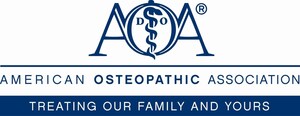CHICAGO, May 28, 2019 /PRNewswire/ -- Research published in The Journal of the American Osteopathic Association found 28 percent of men and 26 percent of women between 35 and 50 years of age had osteopenia, a precursor to osteoporosis.
The findings surprised the participants and researchers, who did not expect the condition to be more prevalent in men. Osteopenia occurs when bones are weaker than normal, but do not yet break easily.
The research suggests bone health assessments can help middle-aged adults understand their future risk of osteoporosis. Fractures are often the first symptom of osteoporosis after years of silent and progressive bone loss.
"We typically associate loss of bone mineral density with post-menopausal women, but our findings showed elevated risk in younger men," says Martha Ann Bass, PhD, Associate Professor of Health, Exercise Science and Recreational Management at University of Mississippi, and lead author on this study. "Almost all participants who were found to have osteopenia were surprised and I think this is a more prevalent issue than anyone expected."
In her study, Bass analyzed the bone mineral density of 173 adults between 35 and 50 years old. Participants were scanned at the femoral hip and lumbar spine, using dual-energy x-ray absorptiometry, which is proven to be precise, while exposing patients to a minimal dose of radiation.
Based on the findings, Bass believes more middle-aged adults should be scanned to understand their risk and establish a baseline for monitoring.
Keeping bones strong
Bone mineral density (BMD) is measured to determine bone health. Nutrition, lifestyle, environment, physical activity and genetics all contribute to BMD. Peak BMD is believed to be established by 30 years of age.
BMD decreases naturally with age, which means people who do not establish sufficiently strong bones as young adults are at increased risk for diseases like osteoporosis later in life.
Bass says the best way to maintain BMD is through weight-bearing exercises, like walking, running and jumping. Moderate weight lifting is also beneficial, though older adults are cautioned to maintain good form and avoid overly heavy weights.
Bass also noted that many of the men participating in her study had strong exercise habits, although a majority reported cycling as their workout of choice. Like swimming, cycling benefits the cardiovascular system but is not weight-bearing.
While a balanced diet is always important, patients may overestimate the value of calcium in maintaining bone health.
"Calcium plays a larger role when bones are still developing," says Bass. "After that, the body begins to rely on weight-bearing exercise to keep bones strong. It really does boil down to use it or lose it."
About The Journal of the American Osteopathic Association
The Journal of the American Osteopathic Association (JAOA) is the official scientific publication of the American Osteopathic Association. Edited by Robert Orenstein, DO, it is the premier scholarly peer-reviewed publication of the osteopathic medical profession. The JAOA's mission is to advance medicine through the publication of peer-reviewed osteopathic research.
SOURCE American Osteopathic Association

Related Links
WANT YOUR COMPANY'S NEWS FEATURED ON PRNEWSWIRE.COM?
Newsrooms &
Influencers
Digital Media
Outlets
Journalists
Opted In






Share this article